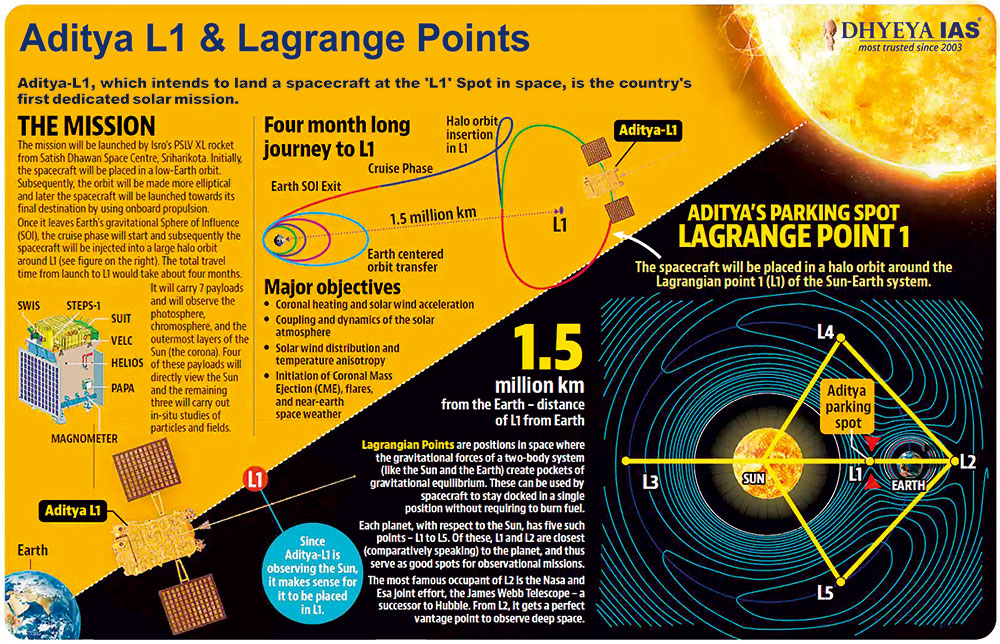
Aditya-L1, which intends to land a spacecraft at the 'L1' Spot in space, is the country's first dedicated solar mission.
THE MISSION
The mission will be launched by Isro's PSLV XL rocket from Satish Dhawan Space Centre, Sriharikota. Initially, the spacecraft will be placed in a low-Earth orbit. Subsequently, the orbit will be made more elliptical and later the spacecraft will be launched towards its final destination by using onboard propulsion. Once it leaves Earth's gravitational Sphere of Influence (SOI), the cruise phase will start and subsequently the spacecraft will be injected into a large halo orbit around L1 (see figure on the right). The total travel time from launch to L1 would take about four months.
Major objectives
- Coronal heating and solar wind acceleration
- Coupling and dynamics of the solar atmosphere
- Solar wind distribution and temperature anisotropy
- Initiation of Coronal Mass Ejection (CME), flares, and near-earth space weather.
What is Lagrange points?
- Lagrange points are positions in space where objects sent there tend to stay put. At Lagrange points, the gravitational pull of two large masses precisely equals the centripetal force required for a small object to move with them. These points in space can be used by spacecraft to reduce fuel consumption needed to remain in position.
- Lagrange points are named in honor of Italian- French mathematician Josephy-Louis Lagrange.
L1 Point
- The L1 point of the Earth-Sun system affords an uninterrupted view of the sun and is currently home to the Solar and Heliosphere Observatory Satellite SOHO.
L2 point
- L2 in the Earth-Sun system is perfect for telescopes like WMAP, Planck, and James Webb. It offers constant solar power and clear deep space views. But L1 and L2 need frequent course corrections every 23 days due to instability.
L3 Point
- It is unlikely to find any use for the L3 point since it remains hidden behind the Sun at all times.
L4 and L5 points
- L4 and L5 are points in the orbital plane forming equilateral triangles with a base connecting the centers of two masses. L4 is 60° ahead of the smaller mass in its orbit, and L5 is 60° behind it.
